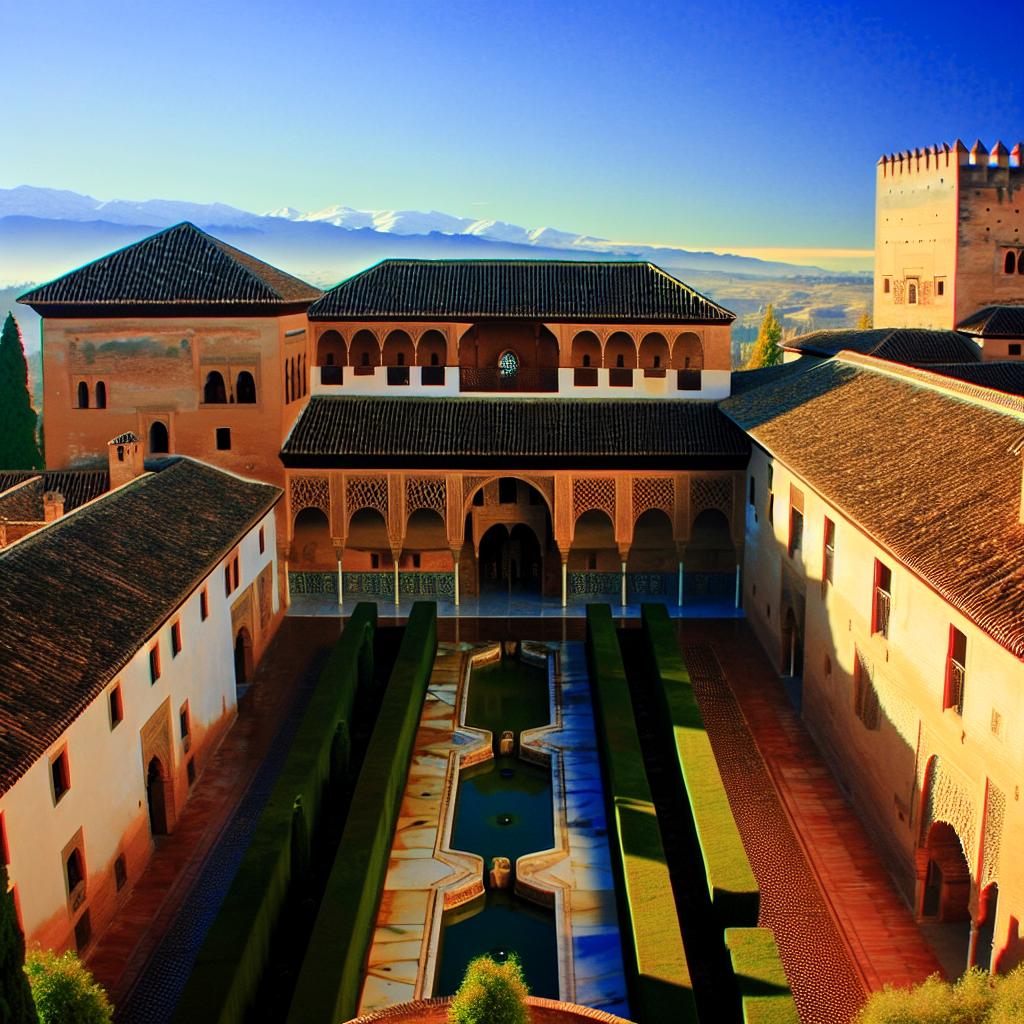Contents
The Historical Significance of the Alhambra Palace
The Alhambra Palace, located in Granada, Spain, stands as a testament to the rich cultural exchanges during the medieval period. Built primarily between 1238 and 1358, the Alhambra is a premier example of Moorish architecture, showcasing the intricate artistry of the Nasrid dynasty. This palace complex served not only as a royal residence but also as a fortress, reflecting its strategic importance in the region’s history.
Architectural Features
The Alhambra is renowned for its distinctive architecture, which incorporates ornate archways, intricately carved stucco walls, and the use of water features such as fountains and reflective pools. This architectural marvel combines various elements that demonstrate the high level of skill and artistry prevalent during its construction. Among the standout features, the palace boasts the remarkable Mocárabe ceilings, which are designed to resemble stalactites, exhibiting the exceptional craftsmanship of the artisans. The intricate details of the geometric patterns and the Arabic inscriptions further accentuate the complexity and beauty of the design.
The Importance of Water
Water plays a critical role in the design of the Alhambra, symbolizing purification and power. The use of water features is both aesthetic and functional, contributing to the palace’s serene atmosphere. The central courtyard of the lions, featuring a fountain supported by twelve lion statues, is a highlight of the palace’s innovative implementation of water. The strategic use of water not only serves a decorative purpose but also reflects the architectural integration of nature into the fabric of the palace. The sound of water flowing through the various channels and pools enhances the tranquil environment, allowing visitors to experience the palace as a harmonious retreat from the outside world.
Cultural Heritage and Influence
Beyond its architectural marvels, the Alhambra stands as a symbol of the cultural confluence of its time. It reflects the integration of various cultural influences, primarily Islamic, Christian, and Jewish. Following the Reconquista, the palace underwent significant changes. When the Catholic Monarchs, Ferdinand and Isabella, took control of Granada in 1492, they made modifications that incorporated elements of Renaissance architecture, demonstrating an evolution of styles within the complex. These changes illustrate the blending of cultural elements that occurred as different groups exerted influence over the region, further enriching the historical narrative of the Alhambra.
Preservation and Restoration
Throughout the centuries, efforts have been made to preserve the Alhambra, maintaining its status as a UNESCO World Heritage site. These initiatives ensure that the palace retains its historical integrity while accommodating modern-day visitors. Restoration projects often focus on preserving delicate mosaic tiles and repairing damage caused by wear and natural elements. The restoration process is meticulous and requires a deep understanding of historical construction techniques to ensure that the work remains true to the original artistry. These efforts not only safeguard the physical structure of the Alhambra but also its cultural significance for future generations to appreciate and learn from.
Visitor Experience
The Alhambra remains one of Spain’s most visited tourist attractions, drawing millions of visitors annually. A trip to the Alhambra offers a comprehensive glimpse into the artistry and history of medieval Spain. Visitors are encouraged to explore not only the main palatial structures but also the lush gardens of the Generalife, which served as a summer palace and retreat for the Nasrid rulers. These gardens, characterized by their terraced arrangement, vibrant foliage, and serene water features, offer a peaceful escape and provide insight into the recreational aspects of court life during the Nasrid dynasty.
Access and Tickets
For those planning a visit to the Alhambra, it is advisable to book tickets in advance due to the site’s popularity. The demand for entry is high, and securing tickets ahead of time ensures that visitors can make the most of their experience without facing delays or disappointments. More information about ticketing and visiting hours can be found on the official Alhambra Patronato website. Preparation and planning are key to experiencing all that the Alhambra has to offer, from its historical significance to its breathtaking architectural beauty.
In conclusion, the Alhambra Palace stands as a monumental example of historical architecture and cultural exchange. Its design, marked by intricate detail and the harmonious use of natural elements, sets it apart as a symbol of medieval innovation and artistry. The blend of cultural influences found within its walls tells a unique story of the region’s past, while the preservation and restoration efforts continue to protect its legacy for all who visit. As a place of historical and aesthetic significance, the Alhambra remains an essential destination for those seeking to connect with the rich tapestry of history and culture that defines Granada and, by extension, Spain.

